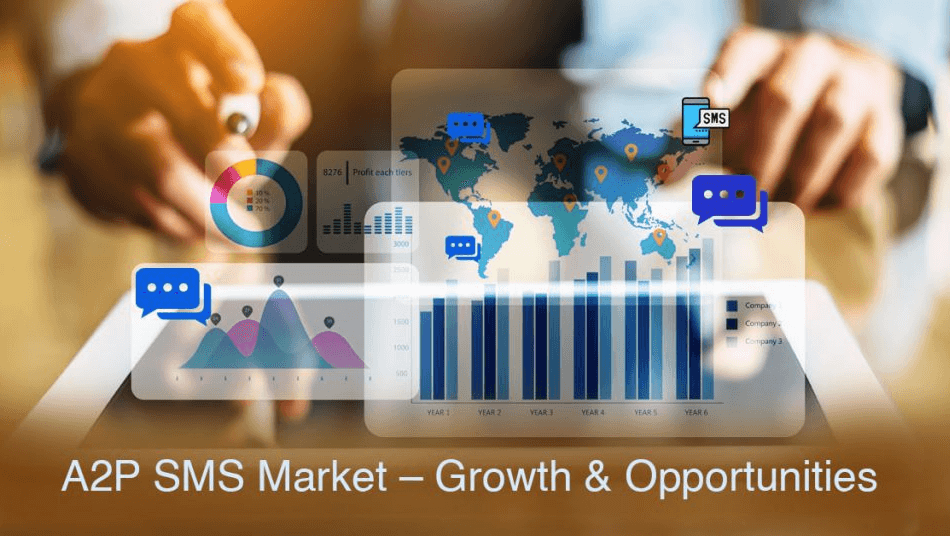📑 Table of Contents
The global mobile marketing market is experiencing an unprecedented surge, fueled by rapid smartphone adoption, 5G advancements, and an evolving digital advertising landscape. Valued at USD 22.19 billion in 2024, mobile marketing is projected to grow from USD 26.20 billion in 2025 to USD 99.18 billion by 2033, expanding at a compound annual growth rate (CAGR) of 18.1% over the forecast period (2025–2033).
With businesses shifting towards mobile-first strategies, leveraging SMS, in-app advertising, social media marketing, and location-based promotions, mobile marketing has evolved into an indispensable tool for brands seeking direct, personalized engagement with consumers. The increasing dependence on smartphones for shopping, entertainment, banking, and social interactions has created a lucrative opportunity for marketers to connect with users in real time.
Understanding Mobile Marketing
Mobile marketing refers to the practice of using mobile devices, such as smartphones and tablets, to promote products and services, offering brands an opportunity to engage consumers instantly. Unlike traditional digital marketing, which relies heavily on web-based interactions, mobile marketing capitalizes on push notifications, SMS, mobile search ads, app-based advertising, and geo-targeting to deliver highly relevant, time-sensitive messages.
Key components of mobile marketing include:
- Push Notifications – Timely updates that drive customer engagement and retention.
- In-App Advertising – Ads integrated into mobile applications to reach active users.
- Location-Based Marketing – Personalized promotions triggered by geofencing technology.
- Mobile Search Ads – Optimized advertisements appearing in mobile search results.
These strategies enhance user experience, improve brand recall, and increase conversion rates, making mobile marketing one of the most powerful digital engagement tools available today.
Smartphone Boom Fuels Mobile Marketing Expansion
One of the biggest drivers of mobile marketing growth is the widespread adoption of smartphones worldwide. With global smartphone users expected to surpass 5 billion in 2023, businesses now have an extensive consumer base to target through mobile-first strategies.
Rising smartphone penetration is transforming consumer behavior, shifting interactions from desktop-based browsing to mobile-driven engagement. Brands now leverage QR codes, app-based promotions, and mobile-friendly content to capture consumer attention seamlessly.
Example:
Global brands like Coca-Cola have embraced mobile-first marketing by integrating QR codes on packaging, allowing consumers to access exclusive content, participate in promotions, and engage with the brand directly from their smartphones.
Additionally, emerging markets such as India, Brazil, and Southeast Asia are witnessing a surge in affordable smartphone adoption, further expanding the reach of mobile marketing strategies.
As mobile devices become an essential part of daily life, advertisers have an unprecedented opportunity to integrate promotional content into everyday consumer activities—from mobile banking to e-commerce shopping and digital streaming.
5G Technology Opens New Avenues for Immersive Advertising
The global rollout of 5G networks is set to revolutionize mobile marketing by enhancing speed, connectivity, and interactive capabilities. With ultra-fast data speeds and low latency, 5G enables advanced advertising formats, including:
High-Definition Video Ads – Faster streaming of video-based marketing content.
Augmented Reality (AR) & Virtual Reality (VR) Ads – Interactive experiences enhancing consumer engagement.
Personalized & AI-Driven Ad Targeting – Real-time, data-powered advertising recommendations.
Example:
Tech giants like Qualcomm and Verizon have demonstrated 5G-powered interactive video ads, where users can customize products in real-time while watching live promotional content. Similarly, Pepsi has leveraged 5G-driven video ads, allowing consumers to personalize their drink preferences while watching a live-streamed advertisement.
Furthermore, AR-powered advertising is gaining momentum, with companies like IKEA using AR features to let customers visualize furniture placement in their homes via mobile devices. The seamless and ultra-responsive experience provided by 5G technology is expected to elevate consumer engagement, boosting the effectiveness of mobile marketing campaigns.
Regional Market Insights

North America currently dominates the global mobile marketing landscape, accounting for approximately 38% of the total market share.
The region benefits from:
- A mature digital ecosystem with high smartphone penetration.
- Widespread adoption of personalized, data-driven advertising.
- Strong investments in AI-powered marketing automation and programmatic advertising.
Additionally, the rise of mobile commerce (m-commerce) and seamless app-based purchasing experiences have further fueled mobile marketing adoption in North America.
Meanwhile, Asia-Pacific is emerging as a high-growth region, with countries like China, India, and Indonesia witnessing explosive digital adoption.
Factors such as:
Affordable smartphones & expanding internet penetration.
Growth of mobile payment platforms (e.g., Alipay, Paytm, GCash).
Increasing investments in mobile-first advertising solutions.
…are driving mobile marketing expansion across the region, making it a key focus area for global brands.
Key Industry Segments Driving Growth
- By Component:
- Platforms (Owns the highest market share)
- Services
- By Channel:
- Messaging (Highest market share)
- Push Notifications
- Mobile Emails
- Quick Response (QR) Codes
- Others
- By Industry Vertical:
- Retail & E-Commerce (Leading segment)
- Travel & Logistics
- Automotive
- BFSI (Banking, Financial Services, & Insurance)
- IT & Telecom
- Others
Competitive Landscape
Several key players dominate the mobile marketing industry, offering advanced solutions for customer engagement, AI-driven targeting, and personalized advertising:
Major Companies in Mobile Marketing:
- Google – Leader in mobile search ads and app-based advertising.
- Facebook (Meta) – Dominates social media marketing via mobile platforms.
- Adobe – Offers AI-powered customer experience solutions.
- HubSpot – Specializes in marketing automation for mobile engagement.
- Mailchimp – Email & SMS marketing solutions provider.
- Braze – Focuses on personalized push notifications and messaging.
- MoEngage – Customer analytics and engagement solutions.
- CleverTap – AI-driven retention marketing.
Challenges in Mobile Marketing
As mobile marketing will continue to grow in 2033, businesses must tackle key challenges to stay effective and consumer-friendly.
1. Data Privacy & Regulations
Stricter laws like GDPR, CCPA, and Apple’s ATT require explicit consent, limiting tracking and targeting. Marketers must shift to first-party data and AI-driven contextual ads.
2. Ad Fatigue & Consumer Trust
Users ignore or get annoyed by intrusive ads. To boost engagement:
- Use native and interactive ads
- Implement AI-driven personalization
- Limit ad frequency to avoid oversaturation
3. Platform Fragmentation
Managing campaigns across Google, TikTok, Instagram, and apps is complex. Solutions include:
- Omnichannel strategies for consistency
- AI-powered analytics for better tracking
- Programmatic advertising for optimization
Final Thought
Success in mobile marketing depends on privacy compliance, engaging content, and seamless cross-platform strategies.
Latest Developments in Mobile Marketing
March 2024: Google launched new developer tools at the Games 2024 Developer Summit, aimed at helping mobile app creators enhance ad integration and revenue diversification. The move is set to empower businesses to optimize their mobile app monetization strategies, further driving the growth of mobile marketing.

Final Thoughts
As smartphone adoption continues to rise and 5G technology unlocks new advertising possibilities, mobile marketing is set to become the dominant force in digital advertising. Brands that invest in personalized, mobile-first experiences will gain a competitive edge, fostering deeper customer engagement and higher conversion rates.
Is your business ready for the future of mobile marketing? Now is the time to embrace mobile-first strategies and capitalize on the $99.18 billion market opportunity ahead!
